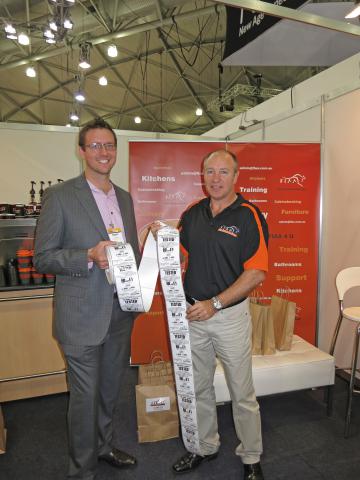
A major Queensland developer has cancelled a $12 million shipment of kitchen and bathroom components from Asia after warnings the products could be blacklisted by Australian building authorities and the CFMEU.
The Asian manufacturers were unable to guarantee the joinery fixtures – ordered for the fit out of five 30-storey towers and apartment buildings on the Gold Coast – would meet Australian standards for structural safety and formaldehyde emissions.
This is believed to be the first group enforcement of its kind in Australia. Certificates showing compliance with Australian building codes and standards were demanded by the project builders, joinery and shop fitters, the site manager, the construction company, the contract administrator and the powerful CFMEU.
The Construction, Forestry, Mining and Energy Union, representing the building and construction, forestry and furnishing and mining and energy sectors, has more than 120,000 members and employs around 400 full time staff and officials.
Confronted with the list of building standard requirements and the possibility that the imported building products could be condemned before they left the container ship in Brisbane, the developer decided to choose kitchen and bathroom products manufactured locally.
“By using the imported products which were sure to fail Australian standards on all fronts, the developers probably would have achieved a saving of only around $500,000 on the project,” one industry analyst observed.“And had they gone ahead, the cost of non-compliance would have cost millions.”
Demands on the developer got tougher every day; the CFMEU warned if the components were not ‘legal’ they would be banned from entry to the building site and if any kitchen or bathroom component installed showed emissions higher than Australian standards they would be ripped out.”
The general manger of the Engineered Wood Products Association of Australasia Simon Dorries was heartened by the group action on imports. EWPAA is in the middle of a consumer campaign that guarantees Australian and New Zealand engineered wood products are tested to conform to safe emission levels demanded by health authorities.
The campaign, in association with the Furnishing Industry Association of Australia, includes the distribution of thousands of flyers to FIAA members carrying the message products manufactured by EWPAA members are certified Super E0, EO and E1 under a strict JAS-ANZ accredited system.
Mr Dorries said laboratory tests by EWPAA had shown some imported wood panels had emissions greater than 3 mg/L, well above safe levels recommended by the federal government’s National Industrial Chemicals Notification and Assessment Scheme (NICNAS).
“Random testing reveals unsafe materials are still entering the Australian market – a potentially serious problem,” Mr Dorries said. He said plywood and veneer wardrobes and joinery items imported from China and installed on a multi-unit building project in northern NSW were condemned after the Department of Housing found emission levels had “soared through the roof” and the health and safety of occupants was put at risk.
The project cost the developers an additional $1.3 million to replace the furniture and employ plumbers and electricians for a complete re-build after the non-compliance order.
NICNAS, which is responsible for the assessment and safe use of industrial chemicals, has advised construction workers and wood panel users against the use of products that contain formaldehyde exceeding the low emission limits of E0 and E1. Products meeting E0 and E1 are considered safe in all applications including indoor and poorly ventilated applications. The EWPAA maintains NATA-accredited laboratories to test for formaldehyde emissions. All EWPAA certified products are tested on a monthly basis. The schemes are accredited by the Joint Accreditation System of Australian and New Zealand (JAS-ANZ).
The average formaldehyde emission for all structural and Type A exterior plywood products produced by EWPAA certified mills is only 0.14mg/L or one-third the permitted level for E0 and approximate to the natural formaldehyde emission from timber.
Photo: Dean Brakell, general manager, Furnishing Industry Association of Australia (right) discusses the FIAA-EWPAA low-emissions sticker campaign with FIAA director Brad Willis of Clarence Valley Kitchens, South Grafton, NSW, during AWISA 2014 in Brisbane.

